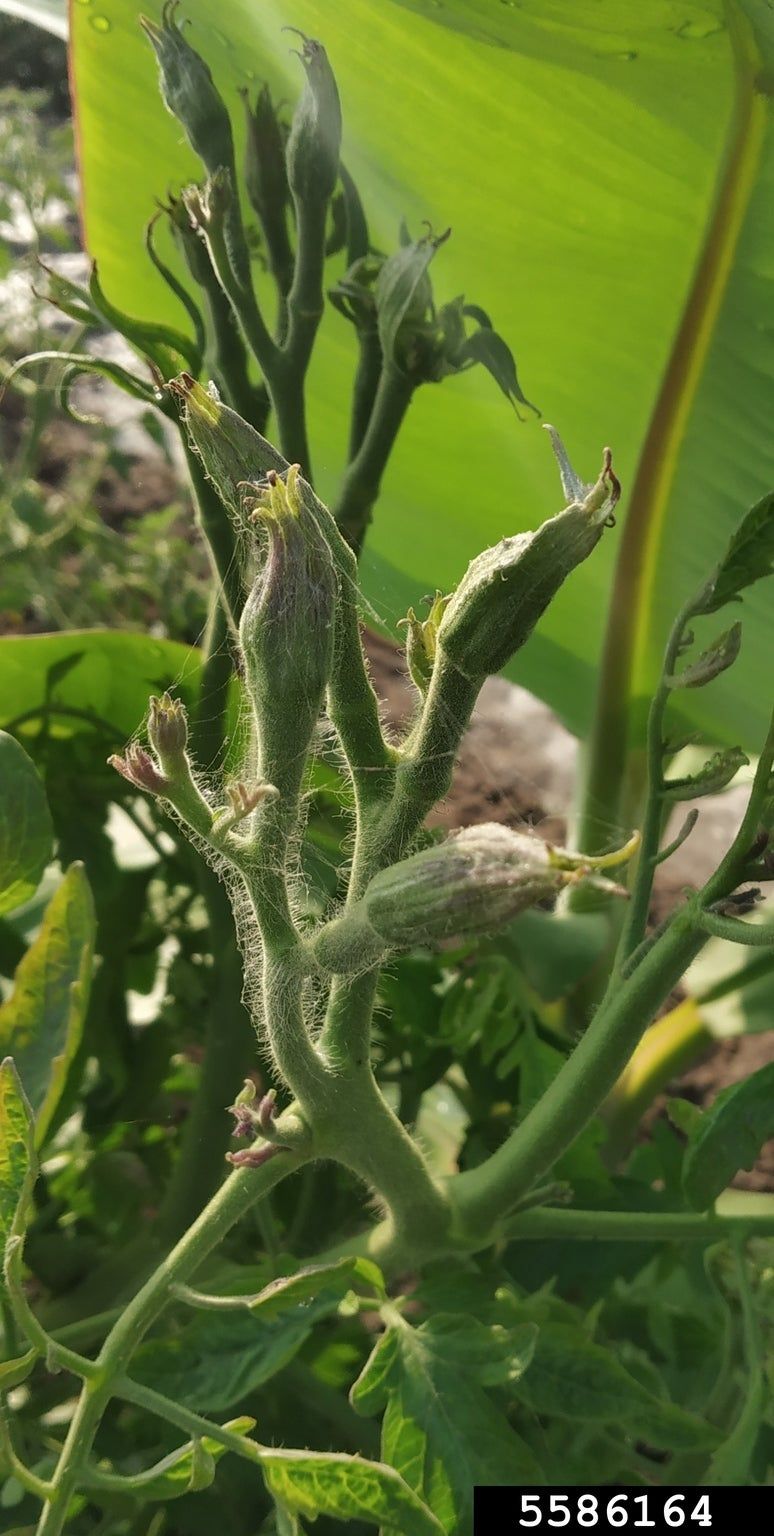Symptoms Of Tomato Big Bud Disease: Learn About Big Bud In Tomatoes

I would venture to say that as gardeners, most, if not all of us have grown tomatoes. One of the growing pains involved in cultivating tomatoes, one of a possible multitude, is the tomato big bud virus. What are some of the symptoms of tomato big bud disease and how can we combat big bud in tomatoes? Let’s find out.
What is Tomato Big Bud Phytoplasma?
Healthy tomato plants typically provide ample fruit. Sometimes though, as much as we baby them, the plants become afflicted with a pest or disease. In the case of tomato big bud phytoplasma, the plant is effectively attacked by both pest and disease. It all starts with the trouble makers, leafhoppers. The tomato big bud virus, or phytoplasma, is a microscopic organism, smaller than bacteria. This organism lacks a cell wall and, in scientific studies, has proven to be extremely difficult to cultivate in artificial media. Unfortunately, in nature, this phytoplasma has no difficulty flourishing and afflicts not only tomatoes but a variety of ornamentals and other vegetables like:
The word “phytoplasma” was coined in 1994 upon the discovery of this mycoplasma-like organism. Following the leafhopper migration, the plants become infected with pathogens transmitted from the leafhoppers. The technical description refers to the pathogen as beet leafhopper transmitted viresence agent, a phytoplasm organism.
Symptoms of Tomato Big Bud Disease
The most recognizable symptoms of tomato big bud disease are swollen green buds that are atypically large and don’t set fruit. Stems of the afflicted plants thicken while the foliage becomes distorted and yellow. Aerial roots may appear on the stems and the whole appearance of the plant is bushy due to the shortened internodes and stunted leaves.
Treating Tomato Big Bud Disease in Tomatoes
If plants appear to be infected with the phytoplasm, pull them up and destroy them. If others seem healthy, an attempt to combat the disease should take place post haste. How can you combat the disease? Control the leafhopper vectors and weed hosts. Remove any weeds from the area either by pulling them up or applying an herbicide to kill them. The goal is to destroy areas the leafhoppers call home. Remove the leafhoppers and there is no vector to contaminate the tomato plants. If you find you have a repeat problem with leafhoppers and phytoplasma year after year, try side-dressing with a systemic pesticide like imidacloprid. Apply the pesticide to the soil on both sides of the tomato at bud break and water it in well. Depending upon the pesticide though, read and follow the manufacturer’s instructions carefully.
Gardening tips, videos, info and more delivered right to your inbox!
Sign up for the Gardening Know How newsletter today and receive a free copy of our e-book "How to Grow Delicious Tomatoes".

Amy Grant has been gardening for 30 years and writing for 15. A professional chef and caterer, Amy's area of expertise is culinary gardening.
-
 Ultimate Potted Flowers For Spring: 8 Brilliant Blooming Options for Spring Containers
Ultimate Potted Flowers For Spring: 8 Brilliant Blooming Options for Spring ContainersCelebrate the most uplifting of seasons with the most dazzling container flowers imaginable. Here, we present some of the loveliest potted flowers for spring…
By Tonya Barnett
-
 Never Use Homemade Compost Until It Passes This Simple Radish Test
Never Use Homemade Compost Until It Passes This Simple Radish TestThe radish test is a foolproof trick for knowing whether your homemade compost is ready for planting – or if it could harm the health of your plants.
By Mary Ellen Ellis
